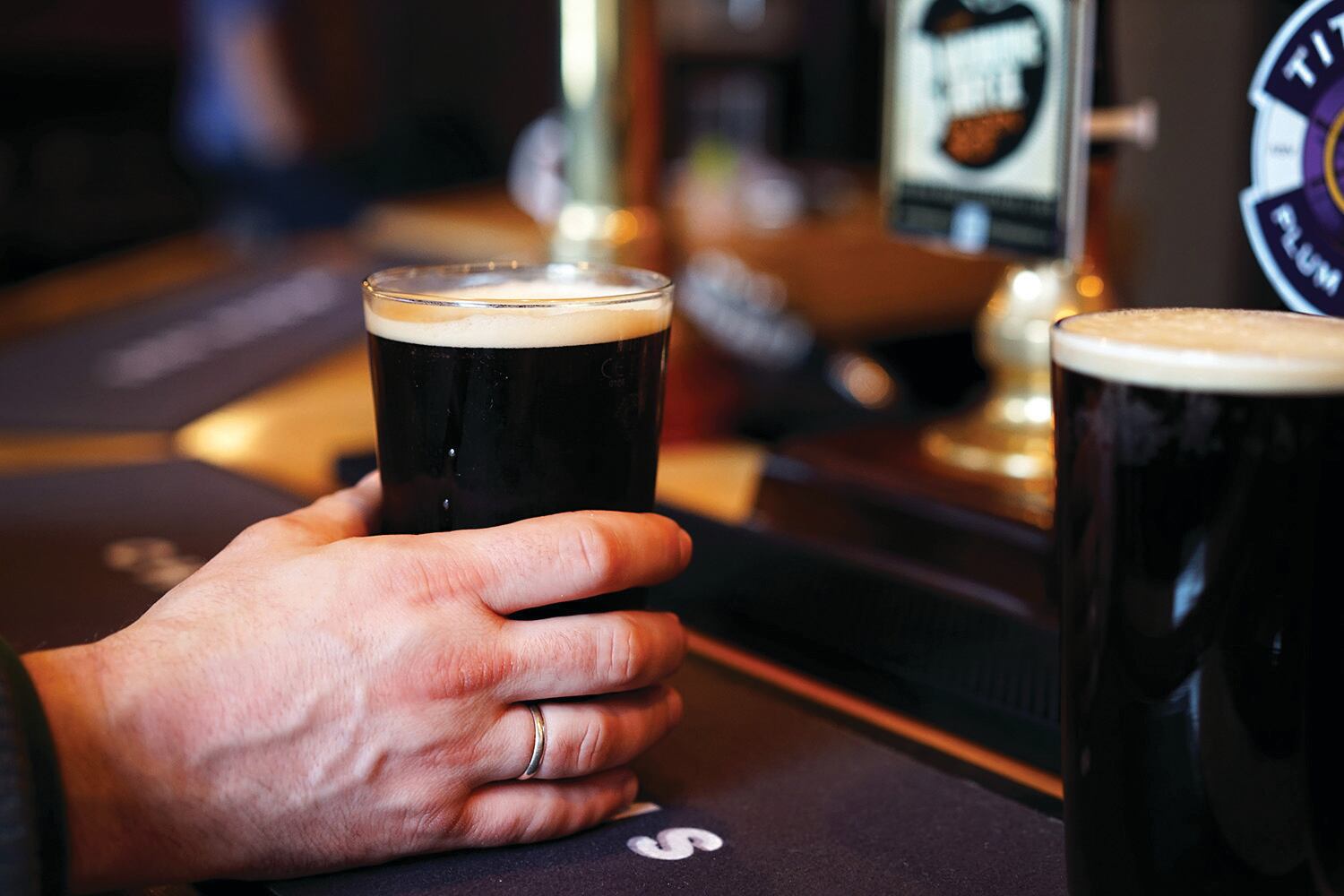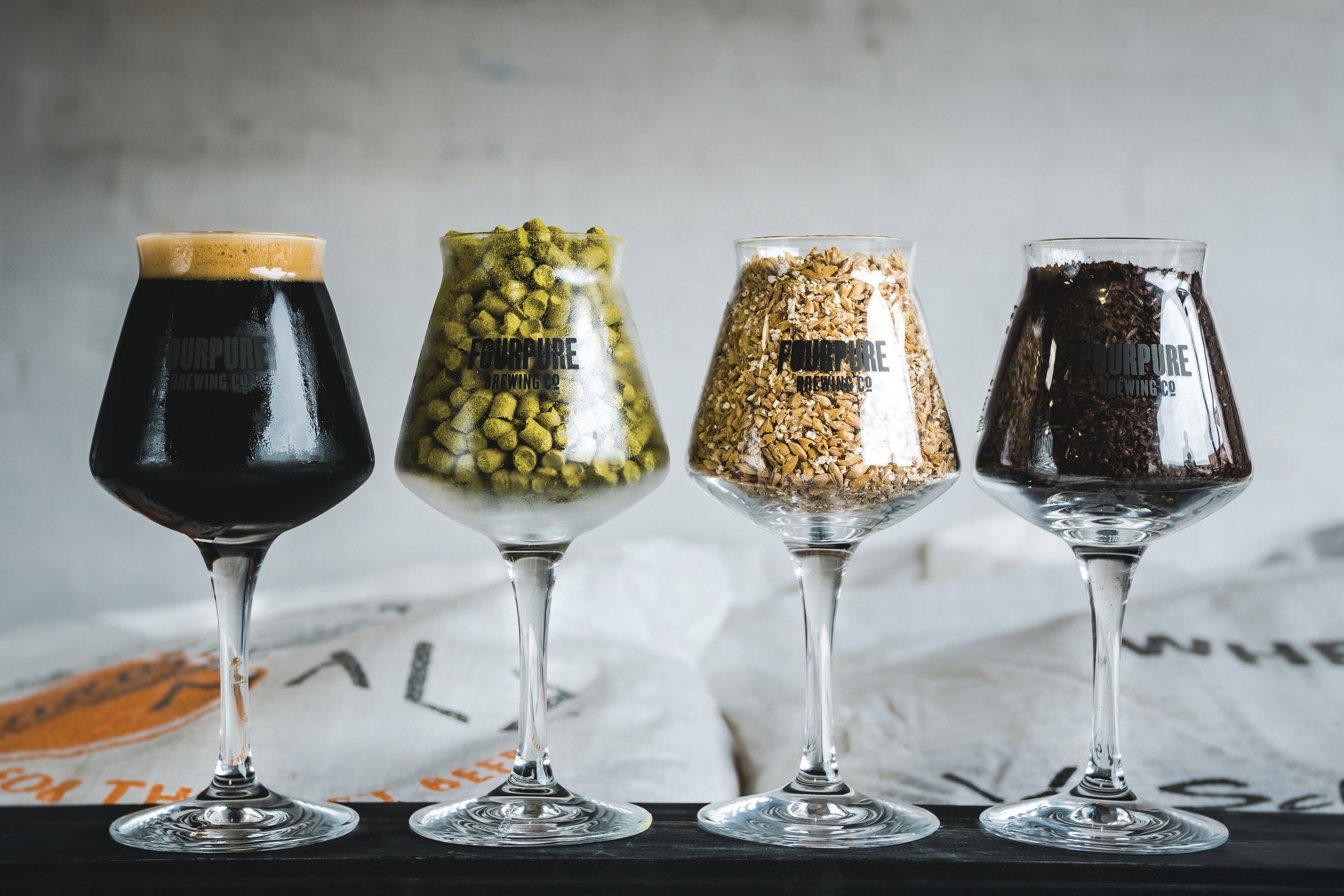In the depths of bleak midwinter, the comforting warmth of a pub can be an enticing prospect. Even more appealing still is the idea of a toasty pint of porter or a rich, creamy stout to wrap your mouth around. Demand for these brews tends to rise during the winter months, as customers seek out a drink that reflects their mood and the weather outside, but just how popular are dark beers, and how essential is it that pubs stock them at this time of year?
On the face of it, dark beers remain a relatively small part of the overall beer category. According to the latest statistics from Cask Marque (published as part of The Cask Report 2018), stout makes up just 6% of volume sales in the market (keg and cask), while just 4% of the market value share in cask is accounted for by dark beer. It seems, despite growing interest in the category from craft beer drinkers (more on that later), stouts, porters, brown ales and barley wines remain a relatively niche pursuit.
A Guinness hangover
6%
The percentage of volume sales in the market (keg and cask) accounted for by stout sales
Two of the biggest stumbling blocks to sales, according to beer writer and London Beer City organiser Will Hawkes, are the colour of dark beers and flavour that drinkers naturally associate with these styles. “Pale, hoppy beers are still overwhelmingly the biggest sellers,” he says. “For a lot of people the flavour and the colour are two big barriers. Whenever you speak to people who aren’t beer lovers about dark beer they will always say ‘it’s so heavy and so calorific’, or it is ‘like having a whole meal in a glass’.
Hawkes puts this reluctance, in part, down to a hangover from the days when Guinness was the only option on the bar, but suggests the drink’s dominance of the category is now ending, mainly thanks to the rise of craft beer.
“People are always interested in trying a local product and, whereas for a long time, Guinness was the most interesting keg option on the bar, now obviously it doesn’t have that position,” he says. “Before if you didn’t fancy any of the cask beers, you’d be all right with Guinness, but it just doesn’t have that dominance anymore.”
This is a view that is reflected by the latest market trends. According to data from craft beer distributor EeBriaTrade, stouts are now the third fastest-growing category on its site, with only IPAs and sours ahead of them, as smaller producers continue to make innovative and new incarnations of the classic style.
The use of experimental adjuncts, such as coffee, chillies and berries, are opening up the dark beer market to new drinkers, while stronger, bolder dark beers are also proving increasingly popular. Sales of darker beers are growing steadily across EeBriaTrade, but it is the strength (literally and metaphorically) of imperial stouts that is turning heads. The style has grown from 1.2% to 3.3% of the company’s total sales in the past 12 months, as consumers chase bigger flavours and higher ABVs.
“At EeBriaTrade we’ve seen a sharp growth in our customers’ appetite for stronger dark beers in the past 12 months,” says EeBria CEO David Jackson. “The 3% to 5% dark beer market seems to be stable and well established but there’s been a real trend for darker beers with higher ABVs to go on bars alongside those more sessionable dark beers.”

Drinkers demand flavour
Jackson highlights the popularity of strong dark beers as something pubs ought to try to capitalise on when seeking to improve dark beer sales. “With more pubs in the on-trade embracing 1/3 pint measures, putting more effort into greater staff education and allowing drinkers tasters before they buy, these beers can really satisfy customers with more discerning palates,” he adds.
One brewery that has tapped into the demand for dark beers within the craft sector is the Five Points Brewing Company in Hackney, east London. Its Railway Porter was one of three beers available from launch, and it currently makes up around 15% of its overall winter sales (this figure drops to 7% during the summer months).
Founder Ed Mason believes the quest for bolder, more interesting flavours is something brewers and licensees need to focus on to drive interest in darker beers. “People in general are wanting more flavour,” he says. “People coming into craft beer are often hooked on seeking out hop-dominated beers and they are then becoming more experimental from that point on. They want sours and hoppy beers, and barrel-aged beers can definitely be a part of that.”
The brewery has just brewed a 12.5% ABV imperial stout to celebrate its milestone 1,000th batch, but Mason insists a high ABV is not essential to make a dark beer popular. “Our Railway Porter isn’t a particularly adventurous beer; it is just really well made and flavoursome,” he adds. “It has won a decent amount of festival awards, particularly in cask, and we have done that through developing its reputation for quality and consistency, without getting too experimental.”
The Five Points approach certainly seems to be paying dividends, with an event dedicated to showcasing dark beer at its Hackney Wick bar, Mason & Company, selling out and forcing the brewery to put on an extra session. “It definitely demonstrates there is an appetite for dark beer out there,” Mason adds.
Tapping into the history
15%
The percentage of The Five Points sales that are accounted for by its Railway Porter during the winter months
With interest blossoming, but not yet in full bloom, the quality of service can be the difference between clearing a dark beer off a line and having it linger and go to waste, and hence the role pubs and bar staff can play is crucial in dictating further growth in the dark beer category. For Hawkes, tapping into the history and heritage of dark beers, particularly in London, is one way pubs could look to increase sales.
“It is very easy to tap into the London history behind dark beers, and it would surprise and amaze a lot of customers,” he says. “Most Londoners have no appreciation that porter is a beer that was born out of London and, for many, many years, was intrinsic to London pubs.
“Yes there is a big chunk of the drinking public that will just not be interested ever, but I think one thing pubs could really do a lot better is to get that historical information correct, because so often it is wrong.”
On the subject of where a venue looking to improve its dark beer selection ought to start, Hawkes insists that quality is always preferable to quantity. “I think pubs need to be reasonably conservative,” he says. “I am not sure we are at the stage yet where pubs can have three or four dark beers on at the same time; there just isn’t the demand.
“If you can have one or two beers on and in absolute peak condition, and have the ability for your staff to be able to discuss it and explain it to people, then that is probably the best approach.
“You need to throw everything at it,” he continues. “There are Guinness drinkers out there who can be convinced to try something different, and then other people from the craft beer world who are into beer and looking for something a bit more malt-forward at this time of year.”
Another possibility is exploring the opportunities dark beers can provide when matched with food. From boozy desserts to strong, mature cheeses, a whole variety of dishes can be paired with imperial stouts, porters and other dark beer styles to drive interest in the category. London’s Fourpure Brewery Co, which is based in Bermondsey, is working with a local cheese maker to come up with an ‘off the shelf’ cheese and beer pairing to sell to venues in the on and off-trade.
“Food and beer pairing has been around for a little while now and most breweries are trying to educate people about it, but it can be a bit daunting,” explains the brewery’s head of marketing Adrian Lugg. “We are trying to give consumers a casual option to try different styles of beer and cheese matched together. There will definitely be the ability to include a dark beer or two as a part of that.”

Seasonal interest
Despite the growing interest, however, there remains doubt about whether dark beers will ever be able to reach the levels enjoyed by their lighter counterparts. Just 5% of Fourpure’s sales are made up of dark beers, despite new additions to the range including an Imperial Maple Bourbon Stout and a Raspberry Chocolate Imperial Porter, and Lugg believes that darker beer styles will very much remain a seasonal part of breweries’, and most pubs’, ranges.
“We tend to release our dark beers during the colder months and go for lighter beers during the summer and autumn, and that seems to be what sells,” he says. “I think it is definitely very much still seasonal, and probably representative of where the UK beer market is at the moment.” Five Points’ Mason echoes this sentiment, stating: “it would take a brave man or woman” to predict dark beer sales ever reaching 20% of the overall market.
“In reality, given current drinking trends, the drinkability of a pale ale is always going to win out,” he says. “However, particularly with the rise of barrel-ageing and imperial stouts, there is growing interest and 10% to 15% of the market would be a great place to aim for.
“It is part of human nature to prefer something light, zesty and drinkable during the summer months. Maybe there is a beer for every season, and that is not necessarily a bad thing.”
